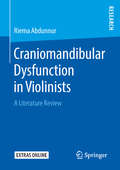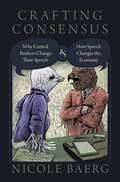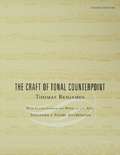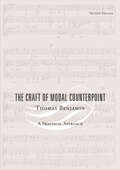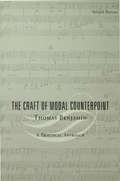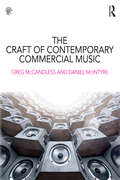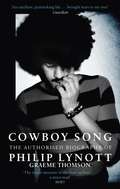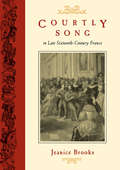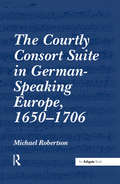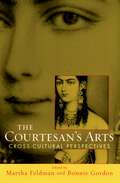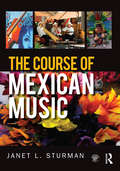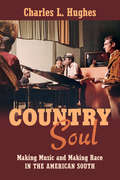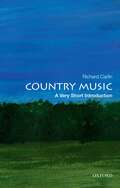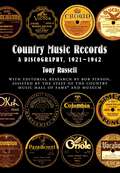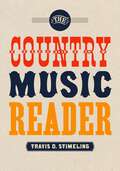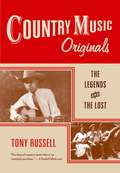- Table View
- List View
Craniomandibular Dysfunction in Violinists: A Literature Review
by Riema AbdunnurRiema Abdunnur gives insight into publications focusing on performing violinists, particularly on those suffering from CMD, subsequently providing a better understanding to the unique work conditions of violinists, and enhancing diagnosis and therapeutic results by practitioner dentists. Moreover, the analysis of the included papers aims to reveal what exactly was studied in violinists regarding to CMD, and how far manual medicine was included there. The conclusion of the author is, playing violin could be classified as a potential factor associated with CMD in violinists. More researches that take the interdisciplinary collaboration between dental and manual medicine into special account are recommended.About the Author Riema Abdunnur did her research studies at Medical University of Innsbruck, Austria.
Crafting Consensus: Why Central Bankers Change Their Speech and How Speech Changes the Economy
by Nicole BaergIn a world dependent on the constant sharing of information, central bankers increasingly communicate their policies to the mass public. Central bank communications are drafted in monetary policy committee meetings composed of policymakers with differing interests. Despite their differences, committee members must come together, write, and agree to an official policy statement. Once released to the public, central bank communications then affect citizens' actions and ultimately, the economy. But how exactly does this work? In Crafting Consensus, Nicole Baerg explains how the transparency of central bank communication depends on the configuration of committee members' preferences. Baerg argues that monetary policy committees composed of members with differing preferences over inflation are better suited to communicating precise information with the public. These diverse committees produce central bank statements of higher quality and less uncertainty than those from more homogeneous committees. Additionally, she argues that higher quality statements more effectively shape individuals' inflation expectations and move the economy in ways that policymakers intend. Baerg demonstrates that central bankers are not impartial technocrats and that their preferences and the institutional rules where they work matter for understanding the politics of monetary policy and variations in economic performance over time. Conducting empirical analysis from historical archival data, textual analysis, machine-learning, survey experiments, and cross-sectional time-series data, Crafting Consensus offers a new theory of committee decision making and a battery of empirical tests to provide a rich understanding of modern-day central banking.
Crafting Consensus: Why Central Bankers Change Their Speech and How Speech Changes the Economy
by Nicole BaergIn a world dependent on the constant sharing of information, central bankers increasingly communicate their policies to the mass public. Central bank communications are drafted in monetary policy committee meetings composed of policymakers with differing interests. Despite their differences, committee members must come together, write, and agree to an official policy statement. Once released to the public, central bank communications then affect citizens' actions and ultimately, the economy. But how exactly does this work? In Crafting Consensus, Nicole Baerg explains how the transparency of central bank communication depends on the configuration of committee members' preferences. Baerg argues that monetary policy committees composed of members with differing preferences over inflation are better suited to communicating precise information with the public. These diverse committees produce central bank statements of higher quality and less uncertainty than those from more homogeneous committees. Additionally, she argues that higher quality statements more effectively shape individuals' inflation expectations and move the economy in ways that policymakers intend. Baerg demonstrates that central bankers are not impartial technocrats and that their preferences and the institutional rules where they work matter for understanding the politics of monetary policy and variations in economic performance over time. Conducting empirical analysis from historical archival data, textual analysis, machine-learning, survey experiments, and cross-sectional time-series data, Crafting Consensus offers a new theory of committee decision making and a battery of empirical tests to provide a rich understanding of modern-day central banking.
The Craft of Tonal Counterpoint
by Thomas BenjaminFirst Published in 2003. Routledge is an imprint of Taylor & Francis, an informa company.
The Craft of Tonal Counterpoint
by Thomas BenjaminFirst Published in 2003. Routledge is an imprint of Taylor & Francis, an informa company.
Craft Of Modal Counterpoint (PDF)
by Thomas Benjamin"The Craft of Modal Counterpoint" is the companion book to Benjamin's "The Craft of Tonal Counterpoint," recently republished in a second edition by Routledge. Modal counterpoint is the style of composition that was employed until the "tonal" revolution pioneered by Bach; it is the basis for most Early Music. Benjamin, a composer and pedagogue, offers a complete analysis of this important musical style. He begins by covering general aspects of the style, then covers in detail two, three, and four-part counterpoint. The Motet, an important form of vocal composition in this period, is studied separately. The book concludes with a brief anthology of key scores, 15 in all, for the student to study further. Also includes 132 musical examples.
The Craft of Modal Counterpoint: A Practical Approach
by Thomas Benjamin"The Craft of Modal Counterpoint" is the companion book to Benjamin's "The Craft of Tonal Counterpoint," recently republished in a second edition by Routledge. Modal counterpoint is the style of composition that was employed until the "tonal" revolution pioneered by Bach; it is the basis for most Early Music. Benjamin, a composer and pedagogue, offers a complete analysis of this important musical style. He begins by covering general aspects of the style, then covers in detail two, three, and four-part counterpoint. The Motet, an important form of vocal composition in this period, is studied separately. The book concludes with a brief anthology of key scores, 15 in all, for the student to study further. Also includes 132 musical examples.
The Craft of Modal Counterpoint
by Thomas Benjamin"The Craft of Modal Counterpoint" is the companion book to Benjamin's "The Craft of Tonal Counterpoint," recently republished in a second edition by Routledge. Modal counterpoint is the style of composition that was employed until the "tonal" revolution pioneered by Bach; it is the basis for most Early Music. Benjamin, a composer and pedagogue, offers a complete analysis of this important musical style. He begins by covering general aspects of the style, then covers in detail two, three, and four-part counterpoint. The Motet, an important form of vocal composition in this period, is studied separately. The book concludes with a brief anthology of key scores, 15 in all, for the student to study further. Also includes 132 musical examples.
The Craft of Contemporary Commercial Music
by Greg McCandless Daniel McIntyreIn the contemporary world, the role of the commercial composer has grown to include a wide range of new responsibilities. Modern composers not only write music, but also often need to perform, record, and market their own works. The Craft of Contemporary Commercial Music prepares today’s music students for their careers by teaching them to compose their own music, produce it professionally, and sell it successfully. The textbook integrates three areas of concentration—music theory and composition, audio engineering, and music business—allowing students to understand and practice how to successfully navigate each stage of a score’s life cycle from concept to contract. Students will learn how to: Translate musical ideas into scores utilizing music theory and composition techniques Transform scores into professional audio through the production stages of tracking, sequencing, editing, mixing, mastering, and bouncing Market works to prospective clients The textbook assumes no prior knowledge of music theory or audio topics, and its modular organization allows instructors to use the book flexibly. Exercises at the end of each chapter provide practice with key skills, and a companion website supports the book with video walkthroughs, streaming audio, a glossary, and printable exercise pages. Combining a grounding in music notation and theory concepts with a foundation in essential technologies, The Craft of Contemporary Commercial Music offers an innovative approach that addresses the needs of students preparing for music careers.
The Craft of Contemporary Commercial Music
by Greg McCandless Daniel McIntyreIn the contemporary world, the role of the commercial composer has grown to include a wide range of new responsibilities. Modern composers not only write music, but also often need to perform, record, and market their own works. The Craft of Contemporary Commercial Music prepares today’s music students for their careers by teaching them to compose their own music, produce it professionally, and sell it successfully. The textbook integrates three areas of concentration—music theory and composition, audio engineering, and music business—allowing students to understand and practice how to successfully navigate each stage of a score’s life cycle from concept to contract. Students will learn how to: Translate musical ideas into scores utilizing music theory and composition techniques Transform scores into professional audio through the production stages of tracking, sequencing, editing, mixing, mastering, and bouncing Market works to prospective clients The textbook assumes no prior knowledge of music theory or audio topics, and its modular organization allows instructors to use the book flexibly. Exercises at the end of each chapter provide practice with key skills, and a companion website supports the book with video walkthroughs, streaming audio, a glossary, and printable exercise pages. Combining a grounding in music notation and theory concepts with a foundation in essential technologies, The Craft of Contemporary Commercial Music offers an innovative approach that addresses the needs of students preparing for music careers.
Cowboy Song: The Authorised Biography of Philip Lynott
by Graeme Thomson'The truest measure of the man we have thus far' - Mojo'Affectionate, impeccably researched biography' - Mail on Sunday'Head and shoulders above the usual rock hagiography' - Sunday TelegraphThe first biography to be written with the cooperation of the Lynott Estate, Cowboy Song is the definitive authorised account of the extraordinary life and career of Thin Lizzy guiding spirit, Philip Lynott.Leading music writer Graeme Thomson explores the fascinating contradictions between Lynott's unbridled rock star excesses and the shy, sensitive 'orphan' raised in working class Dublin. The mixed-race child of a Catholic teenager and a Guyanese stowaway, Lynott rose above daunting obstacles and wounding abandonments to become Ireland's first rock star. Cowboy Song examines his key musical alliances as well as the unique blend of cultural influences which informed Lynott's writing, connecting Ireland's rich reserves of music, myth and poetry to hard rock, progressive folk, punk, soul and New Wave.Published on the thirtieth anniversary of Lynott's death in January 1986, Thomson draws on scores of exclusive interviews with family, friends, band mates and collaborators. Cowboy Song is both the ultimate depiction of a multi-faceted rock icon, and an intimate portrait of a much-loved father, son and husband.
Courtly Song in Late Sixteenth-Century France
by Jeanice BrooksIn the late sixteenth century, the French royal court was mobile. To distinguish itself from the rest of society, it depended more on its cultural practices and attitudes than on the royal and aristocratic palaces it inhabited. Using courtly song-or the air de cour-as a window, Jeanice Brooks offers an unprecedented look into the culture of this itinerant institution. Brooks concentrates on a period in which the court's importance in projecting the symbolic centrality of monarchy was growing rapidly and considers the role of the air in defining patronage hierarchies at court and in enhancing courtly visions of masculine and feminine virtue. Her study illuminates the court's relationship to the world beyond its own confines, represented first by Italy, then by the countryside. In addition to the 40 editions of airs de cour printed between 1559 and 1589, Brooks draws on memoirs, literary works, and iconographic evidence to present a rounded vision of French Renaissance culture. The first book-length examination of the history of air de cour, this work also sheds important new light on a formative moment in French history.
Courtly Song in Late Sixteenth-Century France
by Jeanice BrooksIn the late sixteenth century, the French royal court was mobile. To distinguish itself from the rest of society, it depended more on its cultural practices and attitudes than on the royal and aristocratic palaces it inhabited. Using courtly song-or the air de cour-as a window, Jeanice Brooks offers an unprecedented look into the culture of this itinerant institution. Brooks concentrates on a period in which the court's importance in projecting the symbolic centrality of monarchy was growing rapidly and considers the role of the air in defining patronage hierarchies at court and in enhancing courtly visions of masculine and feminine virtue. Her study illuminates the court's relationship to the world beyond its own confines, represented first by Italy, then by the countryside. In addition to the 40 editions of airs de cour printed between 1559 and 1589, Brooks draws on memoirs, literary works, and iconographic evidence to present a rounded vision of French Renaissance culture. The first book-length examination of the history of air de cour, this work also sheds important new light on a formative moment in French history.
The Courtly Consort Suite in German-Speaking Europe, 1650-1706
by Michael RobertsonDance music at the courts of seventeenth-century Germany is a genre that is still largely unknown. Dr Michael Robertson sets out to redress the balance and study the ensemble dance suites that were played at the German courts between the end of the Thirty Years War and the early years of the eighteenth century. At many German courts during this time, it was fashionable to emulate everything that was French. As part of this process, German musicians visited Paris throughout the second half of the seventeenth century, and brought French courtly music back with them on their return. For the last two decades of the century, this meant the works of Jean-Baptiste Lully, and his music and its influence spread rapidly through the courts of Europe. Extracts from Lully's dramatic stage works were circulated in both published editions and manuscript. These extracts are considered in some detail, especially in terms of their relationship to the suite. The nobility also played their part in this process: French musicians and German players with specialist knowledge were often hired to coach their German colleagues in the art of playing in the French manner, the franz‘sischer Art. The book examines the dissemination of dance music, instrumentation and performance practice, and the differences between the French and Italian styles. It also studies the courtly suites before the advent of Lullism and the differences between the suites of court composers and town musicians. With the possible exception of Georg Muffat's two Florilegium collections of suites, much of the dance music of the German Lullists is largely unknown; court composers such as Cousser, Erlebach, Johann Fischer and Johann Caspar Ferdinand Fischer all wrote fine collections of ensemble suites, and these are examined in detail. Examples from these suites, some published for the first time, are given throughout the book in order to demonstrate the music's quality and show that its neglect is completely unjustifi
The Courtly Consort Suite in German-Speaking Europe, 1650-1706
by Michael RobertsonDance music at the courts of seventeenth-century Germany is a genre that is still largely unknown. Dr Michael Robertson sets out to redress the balance and study the ensemble dance suites that were played at the German courts between the end of the Thirty Years War and the early years of the eighteenth century. At many German courts during this time, it was fashionable to emulate everything that was French. As part of this process, German musicians visited Paris throughout the second half of the seventeenth century, and brought French courtly music back with them on their return. For the last two decades of the century, this meant the works of Jean-Baptiste Lully, and his music and its influence spread rapidly through the courts of Europe. Extracts from Lully's dramatic stage works were circulated in both published editions and manuscript. These extracts are considered in some detail, especially in terms of their relationship to the suite. The nobility also played their part in this process: French musicians and German players with specialist knowledge were often hired to coach their German colleagues in the art of playing in the French manner, the franz‘sischer Art. The book examines the dissemination of dance music, instrumentation and performance practice, and the differences between the French and Italian styles. It also studies the courtly suites before the advent of Lullism and the differences between the suites of court composers and town musicians. With the possible exception of Georg Muffat's two Florilegium collections of suites, much of the dance music of the German Lullists is largely unknown; court composers such as Cousser, Erlebach, Johann Fischer and Johann Caspar Ferdinand Fischer all wrote fine collections of ensemble suites, and these are examined in detail. Examples from these suites, some published for the first time, are given throughout the book in order to demonstrate the music's quality and show that its neglect is completely unjustifi
The Courtesan's Arts: Cross-Cultural Perspectives
by Martha Feldman Bonnie GordonCourtesans, hetaeras, tawaif-s, ji-s--these women have exchanged artistic graces, elevated conversation, and sexual favors with male patrons throughout history and around the world. Of a different world than common prostitutes, courtesans deal in artistic and intellectual pleasures in ways that are wholly interdependent with their commerce in sex. In pre-colonial India, courtesans cultivated a wide variety of artistic skills, including magic, music, and chemistry. In Ming dynasty China, courtesans communicated with their patrons through poetry and music. Yet because these cultural practices have existed primarily outside our present-day canons of art and have often occurred through oral transmission, courtesans' arts have vanished almost without trace. The Courtesan's Arts delves into this hidden legacy, unveiling the artistic practices and cultural production of courtesan cultures with a sideways glance at the partly-related geisha. Balancing theoretical and empirical research, this interdisciplinary collection is the first of its kind to explore courtesan cultures through diverse case studies--the Edo period and modern Japan, 20th-century Korea, Ming dynasty China, ancient Greece, early modern Italy, and India, past and present. Each essay puts forward new perspectives on how the arts have figured in the courtesan's survival or demise. Though performative and often flamboyant, courtesans have been enigmatic and elusive to their beholders--including scholars. They have shaped cultures through art, yet their arts, often intangible, have all but faded from view. Often courtesans have hovered in the crevices of space, time, and practice--between gifts and money, courts and cities, feminine allure and masculine power, as substitutes for wives but keepers of culture. Reproductively irrelevant, they have tended to be ambiguous figures, thriving on social distinction while operating outside official familial relations. They have symbolized desirability and sophistication yet often been reviled as decadent. The Courtesan's Arts shows that while courtesans cultures have appeared regularly in various times and places, they are universal neither as a phenomenon nor as a type. To the contrary, when they do crop up, wide variations exist. What binds together courtesans and their arts in the present-day post-industrialized world of global services and commodities is their fragility. Once vital to cultures of leisure and pleasure, courtesans are now largely forgotten, transformed into national icons or historical curiosities, or reduced to prostitution.
The Course of Mexican Music
by Janet SturmanThe Course of Mexican Music provides students with a cohesive introductory understanding of the scope and influence of Mexican music. The textbook highlights individual musical examples as a means of exploring the processes of selection that led to specific musical styles in different times and places, with a supporting companion website with audio and video tracks helping to reinforce readers' understanding of key concepts. The aim is for students to learn an exemplary body of music as a window for understanding Mexican music, history and culture in a manner that reveals its importance well beyond the borders of that nation.
The Course of Mexican Music
by Janet SturmanThe Course of Mexican Music provides students with a cohesive introductory understanding of the scope and influence of Mexican music. The textbook highlights individual musical examples as a means of exploring the processes of selection that led to specific musical styles in different times and places, with a supporting companion website with audio and video tracks helping to reinforce readers' understanding of key concepts. The aim is for students to learn an exemplary body of music as a window for understanding Mexican music, history and culture in a manner that reveals its importance well beyond the borders of that nation.
Country Soul: Making Music and Making Race in the American South
by Charles L. HughesIn the sound of the 1960s and 1970s, nothing symbolized the rift between black and white America better than the seemingly divided genres of country and soul. Yet the music emerged from the same songwriters, musicians, and producers in the recording studios of Memphis and Nashville, Tennessee, and Muscle Shoals, Alabama--what Charles L. Hughes calls the "country-soul triangle." In legendary studios like Stax and FAME, integrated groups of musicians like Booker T. and the MGs and the Muscle Shoals Rhythm Section produced music that both challenged and reconfirmed racial divisions in the United States. Working with artists from Aretha Franklin to Willie Nelson, these musicians became crucial contributors to the era's popular music and internationally recognized symbols of American racial politics in the turbulent years of civil rights protests, Black Power, and white backlash. Hughes offers a provocative reinterpretation of this key moment in American popular music and challenges the conventional wisdom about the racial politics of southern studios and the music that emerged from them. Drawing on interviews and rarely used archives, Hughes brings to life the daily world of session musicians, producers, and songwriters at the heart of the country and soul scenes. In doing so, he shows how the country-soul triangle gave birth to new ways of thinking about music, race, labor, and the South in this pivotal period.
Country Music: A Very Short Introduction (Very Short Introductions)
by Richard CarlinCountry Music: A Very Short Introduction presents a compelling overview of the music and its impact on American culture. Country music has long been a marker of American identity; from our popular culture to our politics, it has provided a soundtrack to our national life. While traditionally associated with the working class, country's appeal is far broader than any other popular music style. While this music rose from the people, it is also a product of the popular music industry, and the way the music has been marketed to its audience is a key part of its story. Key artists, songs, and musical styles are highlighted that are either touchstones for a particular social event (such as Tammy Wynette's "Stand By Your Man," which produced both a positive and negative backlash as a marker of women's roles in society at the beginning of the liberation movement) or that encompass broader trends in the industry (for example, Jimmie Rodgers' "T for Texas" was an early example of the appropriation of black musical forms by white artists to market them to a mainstream audience). While pursuing a basically chronological outline, the book is structured around certain recurring themes (such as rural vs. urban; tradition vs. innovation; male vs. female; white vs. black) that have been documented through the work of country artists from the minstrel era to today. Truly the voice of the people, country music expresses both deep patriotism as well as a healthy skepticism towards the powers that dominate American society. Country Music: A Very Short Introduction illuminates this rich tradition and assesses its legacy in American popular music culture.
Country Music Records: A Discography, 1921-1942
by Tony Russell Bob PinsonMore than twenty years in the making, Country Music Records documents all country music recording sessions from 1921 through 1942. With primary research based on files and session logs from record companies, interviews with surviving musicians, as well as the 200,000 recordings archived at the Country Music Hall of Fame and Museum's Frist Library and Archives, this notable work is the first compendium to accurately report the key details behind all the recording sessions of country music during the pre-World War II era. This discography documents--in alphabetical order by artist--every commercial country music recording, including unreleased sides, and indicates, as completely as possible, the musicians playing at every session, as well as instrumentation. This massive undertaking encompasses 2,500 artists, 5,000 session musicians, and 10,000 songs. Summary histories of each key record company are also provided, along with a bibliography. The discography includes indexes to all song titles and musicians listed.
Country Music Records: A Discography, 1921-1942
by Tony Russell Bob PinsonMore than twenty years in the making, Country Music Records documents all country music recording sessions from 1921 through 1942. With primary research based on files and session logs from record companies, interviews with surviving musicians, as well as the 200,000 recordings archived at the Country Music Hall of Fame and Museum's Frist Library and Archives, this notable work is the first compendium to accurately report the key details behind all the recording sessions of country music during the pre-World War II era. This discography documents--in alphabetical order by artist--every commercial country music recording, including unreleased sides, and indicates, as completely as possible, the musicians playing at every session, as well as instrumentation. This massive undertaking encompasses 2,500 artists, 5,000 session musicians, and 10,000 songs. Summary histories of each key record company are also provided, along with a bibliography. The discography includes indexes to all song titles and musicians listed.
COUNTRY MUSIC READER C
by Travis D. StimelingIn The Country Music Reader Travis D. Stimeling provides an anthology of primary source readings from newspapers, magazines, and fan ephemera encompassing the history of country music from circa 1900 to the present. Presenting conversations that have shaped historical understandings of country music, it brings the voices of country artists and songwriters, music industry insiders, critics, and fans together in a vibrant conversation about a widely loved yet seldom studied genre of American popular music. Situating each source chronologically within its specific musical or cultural context, Stimeling traces the history of country music from the fiddle contests and ballad collections of the late nineteenth and early twentieth centuries through the most recent developments in contemporary country music. Drawing from a vast array of sources including popular magazines, fan newsletters, trade publications, and artist biographies, The Country Music Reader offers firsthand insight into the changing role of country music within both the music industry and American musical culture, and presents a rich resource for university students, popular music scholars, and country music fans alike.
The Country Music Reader
by Travis D. StimelingIn The Country Music Reader Travis D. Stimeling provides an anthology of primary source readings from newspapers, magazines, and fan ephemera encompassing the history of country music from circa 1900 to the present. Presenting conversations that have shaped historical understandings of country music, it brings the voices of country artists and songwriters, music industry insiders, critics, and fans together in a vibrant conversation about a widely loved yet seldom studied genre of American popular music. Situating each source chronologically within its specific musical or cultural context, Stimeling traces the history of country music from the fiddle contests and ballad collections of the late nineteenth and early twentieth centuries through the most recent developments in contemporary country music. Drawing from a vast array of sources including popular magazines, fan newsletters, trade publications, and artist biographies, The Country Music Reader offers firsthand insight into the changing role of country music within both the music industry and American musical culture, and presents a rich resource for university students, popular music scholars, and country music fans alike.
Country Music Originals: The Legends and the Lost
by Tony RussellGraced by more than 200 illustrations, many of them seldom seen and some never before published, this sparkling volume offers vivid portraits of the men and women who created country music, the artists whose lives and songs formed the rich tradition from which so many others have drawn inspiration. Included here are not only such major figures as Jimmie Rodgers, The Carter Family, Fiddlin' John Carson, Charlie Poole, and Gene Autry, who put country music on America's cultural map, but many fascinating lesser-known figures as well, such as Carson Robison, Otto Gray, Chris Bouchillon, Emry Arthur and dozens more, many of whose stories are told here for the first time. To map some of the winding, untraveled roads that connect today's music to its ancestors, Tony Russell draws upon new research and rare source material, such as contemporary newspaper reports and magazine articles, internet genealogy sites, and his own interviews with the musicians or their families. The result is a lively mix of colorful tales and anecdotes, priceless contemporary accounts of performances, illuminating social and historical context, and well-grounded critical judgment. The illustrations include artist photographs, record labels, song sheets, newspaper clippings, cartoons, and magazine covers, recreating the look and feel of the entire culture of country music. Each essay includes as well a playlist of recommended and currently available recordings for each artist. Finally, the paperback edition now features an extensive index.
